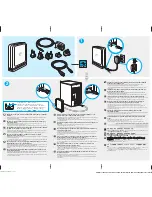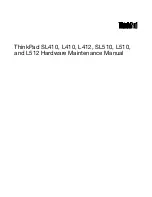
Process Execution
170
iPlanet Integration Server • Process System Guide • August 2001
READY State Handling
When a Queued activity is placed in a READY state, the
activity is placed in a queue named after the queued activity and containing
activities with the same name from multiple process instances. Client applications
access the queue, and accept the highest priority activity on the queue. The priority
ordering of activities in a queue can depend on the value of a queue prioritizing
process attribute. If so, the queue is dynamically reordered whenever an activity is
added to the queue and whenever the prioritizing process attribute changes value.
Transition to ACTIVE State
The engine places a queued, READY activity in an
ACTIVE state when a client application accepts the activity, then removes the
activity from the top of the queue. When a client application accepts an activity, the
engine evaluates the corresponding session against the activity’s assignment rule
to confirm that the client application is eligible to perform the activity.
The engine provides the client application with the associated application
dictionary item (a reference to the application or service needed to perform the
activity, a description of the work to be performed, and any required process
attribute data). The engine ensures that any required process attributes are locked
so that no other session can access it during performance of the activity.
ACTIVE State Handling
The engine performs any work specified in the
OnActive method (if one exists in the process definition).
The client application that accepted the activity is responsible for completing the
work associated with the activity. When the client determines that the work is
complete, it informs the engine, which removes the activity from the session’s
activity list and places the activity in a COMPLETED state.
The client can abort work by requesting that the engine place the activity in an
ABORTED state, or the client can also reset the activity to a READY state
(discarding any work performed on the activity, including changes in attribute
values).
Subprocess Activities
Transition to READY State
In this case the activity skips READY state and is
placed directly in an ACTIVE state.
READY State Handling
A subprocess activity passes directly from a READY to
an ACTIVE state without being assigned to sessions.
Transition to ACTIVE State
In the case of a subprocess activity, the engine
places the activity directly in an ACTIVE state from a PENDING state. It skips a
READY state altogether.
Summary of Contents for iPlanet Integration Server 3.0
Page 1: ...Process System Guide iPlanet Integration Server Version3 0 August 2001...
Page 14: ...14 iPlanet Integration Server Process System Guide August 2001...
Page 18: ...18 iPlanet Integration Server Process System Guide August 2001...
Page 42: ...iIS Process Management Tools 42 iPlanet Integration Server Process System Guide August 2001...
Page 226: ...Performance Charts 226 iPlanet Integration Server Process System Guide August 2001...
Page 326: ...Conductor Script Commands 326 iPlanet Integration Server Process System Guide August 2001...
Page 358: ...Database Schema Reference 358 iPlanet Integration Server Process System Guide August 2001...
















































